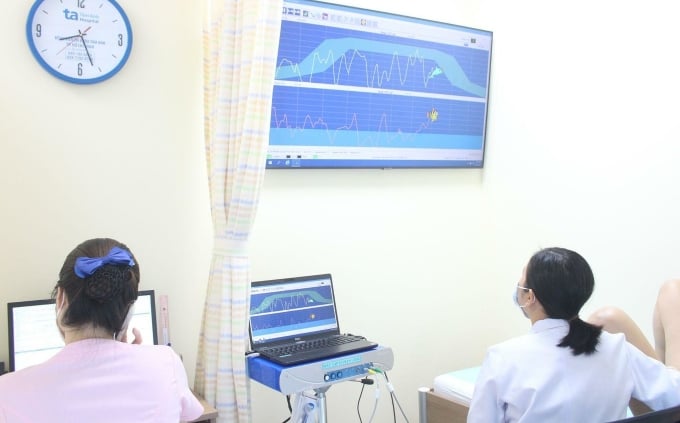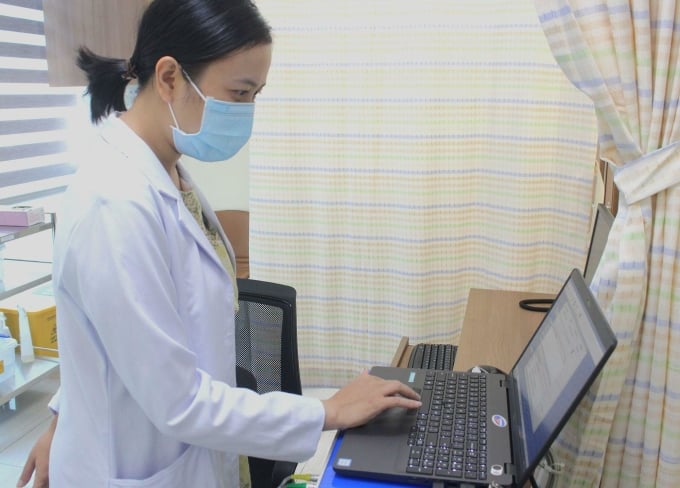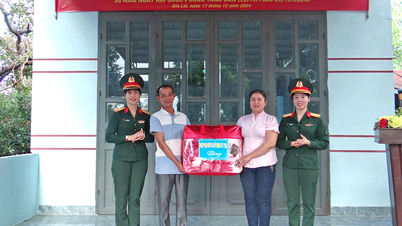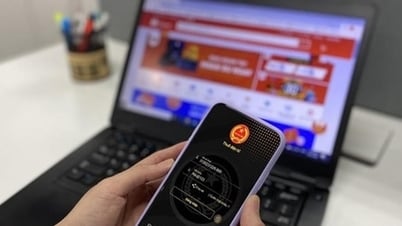Ho Chi Minh City Ms. Nga, 33 years old, had urinary incontinence after giving birth to her second child. The doctor used a pelvic floor rehabilitation machine to improve her urinary incontinence.
On September 29, Master, Doctor Tran Nguyen Phuong An, Obstetrics and Gynecology Center, Tam Anh General Hospital, said that the patient had mild urinary incontinence due to grade 1 cystocele and pelvic floor muscle damage after pregnancy and childbirth. This is a pelvic floor dysfunction that occurs when the muscles, ligaments or pelvic mesentery are weakened due to pregnancy, childbirth or daily heavy work activities.
Ms. Nga wanted to have more children, the doctor treated her with non-invasive biofeedback therapy using a pelvic floor exercise machine (Biofeedback). This is a behavioral adjustment method with observation coordination technique. The machine records the patient's contractions during the exercise and displays them on the screen during the treatment. Thereby, the doctor observes and adjusts the appropriate intensity and rhythm.
This physical therapy method helps patients observe the exercise process, thereby controlling and strengthening the muscles of the perineum. Doctor An said that it is usually impossible to observe the muscle group of the perineum, so it is difficult to exercise this muscle group accurately. Exercising with a machine will increase the effectiveness many times compared to doing kegel exercises at home.

The doctor treated Ms. Nga with a pelvic floor exercise machine with electro-muscle stimulation and biofeedback. Photo: Tue Diem
In parallel with the Biofeedback machine training, the patient is treated with electrostimulation of the perineum. The electrical stimulation process ensures that the patient is comfortable and does not feel any pulling or pulling sensations. The electric source is gentle and safe, activated locally within a 5 cm radius around the pelvic floor area, without affecting other organs. The method is used for young patients with mild genital prolapse, causing urinary incontinence and affecting marital life.
The treatment for Ms. Nga lasted three times, each time 2-3 weeks apart. The patient combined with daily kegel exercises. The physical therapy exercises to restore pelvic floor muscles using electric stimulation at Tam Anh Hospital are designed for each patient.
After three months of treatment, Ms. Nga's urinary incontinence improved by 80%. The doctor continued to use the vaginal laser regimen.
Dr. An cited a study published in PubMed Central journal conducted by a hospital in China in 2023 on 100 postpartum women showing that Kegel exercises combined with electrical stimulation effectively treat postpartum pelvic floor dysfunction.

Doctor Phuong An programs exercises for women to restore their pelvic floor after giving birth. Photo: Tam Anh Hospital
Electrical muscle stimulation is used in the treatment of bone and joint diseases, neurological diseases, rehabilitation, and pelvic floor. Electric current has an effect on the muscular, nervous, and vascular systems.
Doctor Phuong An said the method is contraindicated for patients with urinary tract infections, vaginitis, rectal inflammation, fever, constipation, and during menstruation. People with pacemakers, arrhythmias, metal implants such as prosthetic joints, braces, and pregnant women should not use it.
Wisdom
| Readers ask questions about women's health and physiology here for doctors to answer |
Source link





![[Photo] General Secretary To Lam receives Australian Ambassador to Vietnam Gillian Bird](https://vphoto.vietnam.vn/thumb/1200x675/vietnam/resource/IMAGE/2025/6/26/ce86495a92b4465181604bfb79f257de)






















![[Photo] Candidates take the first graduation exam with the new Literature topic](https://vphoto.vietnam.vn/thumb/1200x675/vietnam/resource/IMAGE/2025/6/26/dfded9e317554c25a3e26defe672ebb7)




































































Comment (0)